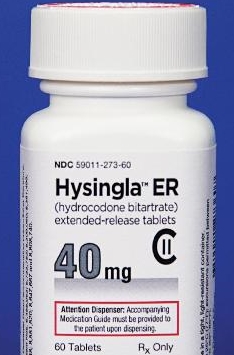Two months after approval, Purdue Pharma announced that its prescription opioid medication Hysingla ER (hydrocodone bitartrate) is ready to hit the market.
The drug is the first hydrocodone product that contains abuse-deterrent properties and its approval came after months of anger over the prescription painkiller category. Prescription abuse trends have triggered pleas to pull some drug approvals as well as municipal lawsuits over how the drugs are marketed.
Despite the concern, drugmakers and the FDA assert that doctors need to be able to offer a variety of painkillers. Hysingla, for example, does not contain acetaminophen. Zogenix’s Zohydro does not contain acetaminophen either, but it does not include abuse-deterrent properties, which was one reason the drug’s approval was controversial.
Abuse-deterrence does not mean that the medications can’t be broken down and abused, but the formulations seek to make it difficult to abuse, with some almost turning into a sludge to make the drugs difficult to inject. Yet the medication designs are not fool-proof.
The FDA’s director of the Center for Drug Evaluation and Research Janet Woodcock noted this in November on the agency’s Voices blog. She also cautioned readers against muddying the differences between medications by focusing only one of a drug’s character, such as the amount of an active ingredient in a given formulation.
The agency head indicated it was wrong and misleading to judge a prescription painkiller’s addiction potential based on doses alone, and to consider factors such as if a medication has a time-released formula.
Woodcock explained that taking this design into account is essential because extended-released formulas do not flow into the bloodstream at-once. This would make comparing this formula against an instant-release formula difficult.
Efforts to curtail abuse, such as prescription drug databases which can help block doctor-shopping, appear to have made a positive impact on prescription rates, yet they also appear to be associated with a migration to illicit opioids, such as heroin.







